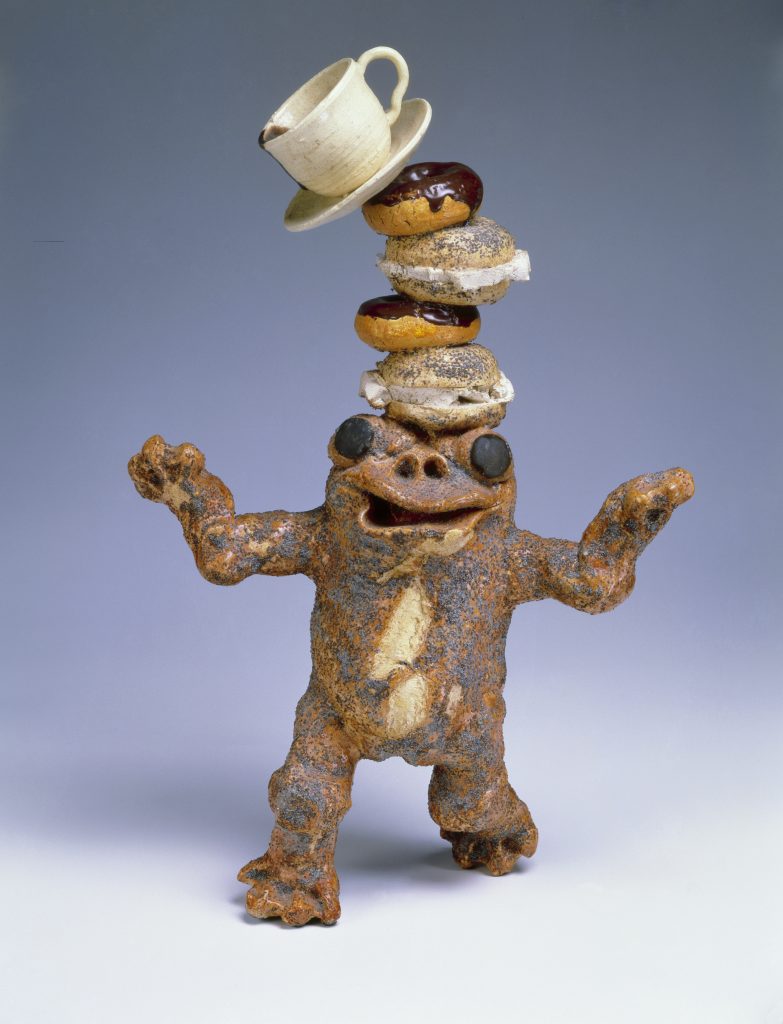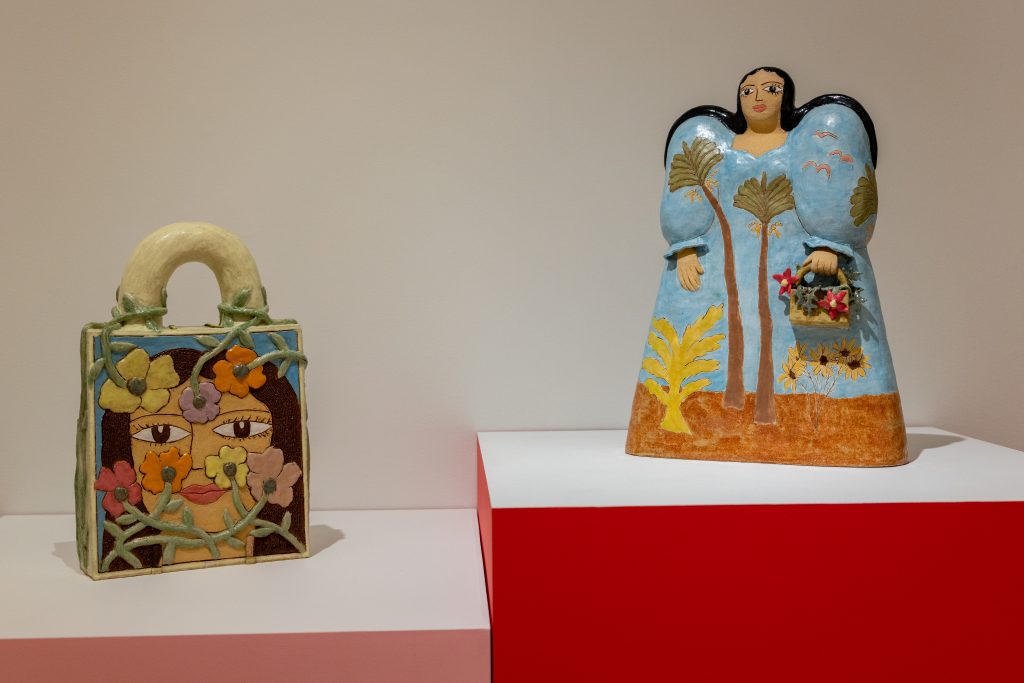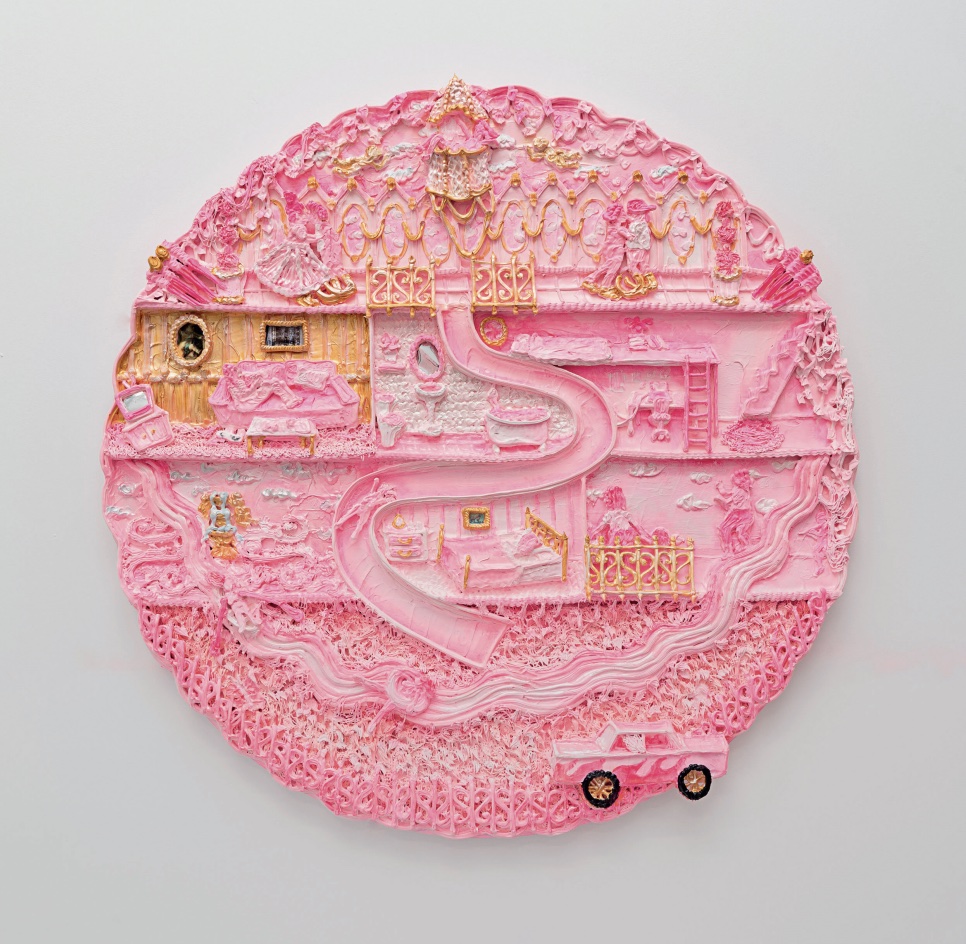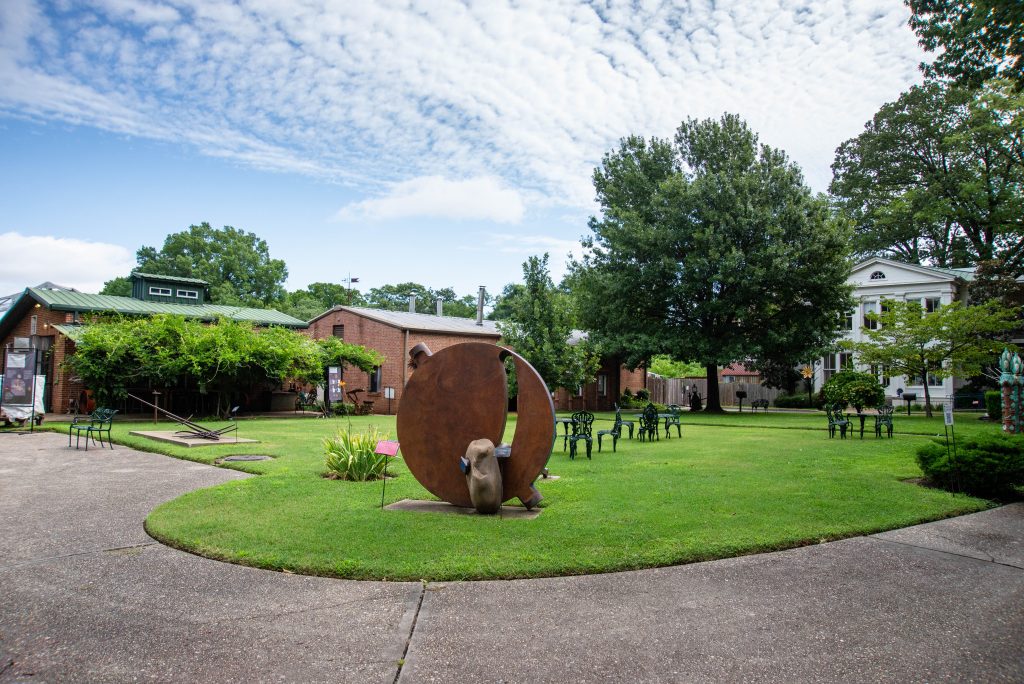Museum of Arts and Design’s “Funk You Too!” Group Exhibit Celebrates Playful, Subversive Ceramics
26 artists converge at the NYC institution to contextualize historical and contemporary Funk Art

Body parts, cute figures, gore, anthropomorphic sculptures and more appear within the 50 artworks of Funk You Too! Humor and Irreverence in Ceramic Sculpture, an exhibition on view now through 27 August at NYC’s Museum of Arts and Design. The subversive exhibit—curated by Angelik Vizcarrondo-Laboy—is a raunchy, funny, sprawling testament to clay’s power as a form of satire while highlighting a pivotal and often overlooked moment in the medium’s history, Funk Art. Bringing together 26 artists from the original Funk wave as well as their contemporaries, the show is as entertaining as it is introspective.

Originating in the 1960s, Funk Art marks a shift in the art world when ceramists began to subvert the expectations of the industry. “Funk ceramics didn’t really crystallize until the 1960s, specifically 1967 when there’s an exhibition in the Bay Area called Funk that had Robert Arneson, who’s for many years the father of funk, and his student, friend and assistant David Gilhooly,” says Vizcarrondo-Laboy. “They started making more of this kind of work which was full of irony and satire and images that weren’t typical at the time. David Gilhooly, his whole thing was frog sculptures. He took human history and translated it into his frog world. At this time, nobody would have expected serious art to have a frog.” These frogs, along with work from Arneson both factor into the show.

This unapologetic departure from industry standards created an independent path for ceramicists, liberating them to break rules, incorporate offbeat visuals, strong ideologies or clearly reference politics and gender. “There was this prolific production of ceramic sculptures that were humorous, figurative and representational at a time when really most ceramics coming from the studio craft movement were either abstract expressionism or functional ware. So there was this other path created by the Funk ceramicists and, in my opinion, if that moment hadn’t happened, then we wouldn’t have the current moment that we’re having now in which clay is a major sculptural medium that bypassed a lot of the stigma that it had in previous years with ‘craft,'” continues the curator.

Vizcarrondo-Laboy situates pieces from Funk’s early beginnings alongside contemporary works that employ humor as a form of critique. The idea came to her at an art fair in Puerto Rico. She explains, “I saw a sculpture by Alake Shilling, who is in the show. I saw this bear sculpture that she did and something about it just made me think of Funk Ceramics immediately. After that, I just kept seeing it everywhere, and that’s what sparked wanting to do this show which is really to contextualize contemporary ceramic practice within the realm of Funk Ceramics.”

The historic and contemporary works are not chronologically displayed in order to draw parallels between the eras. While all the artists combine clay and comedy in order to craft critiques, the systems and subjects under scrutiny vary, from gender inequality to race and colonialism. In Salvador Jiménez-Flores‘ “The Resistance of the Hybrid Cacti,”(which is featured in Funk You Too!‘s compendium) the Chicago-based artist addresses Indigenous issues as a response to biased comments on immigrants made by Donald Trump. The impressive sculpture is interspersed with humorous self-portraits, speaking to the ways communities of color resist and thrive despite difficult conditions. The artist’s central portrait sees him sticking his tongue out, an amusing and figurative middle finger to figures and systems of oppression.

The exhibit itself features new and older works by Yvette Mayorga whose confectionary, cake-like aesthetics confront surveillance and United States-Mexico border politics. In “Surveillance Locket 2,” for instance, Mayorga recreates a Polly Pocket mansion but in place of the dolls the toy stems from, it’s filled with sinister toy soldiers.
“Yvette specifically made a new painting for the show. I see ceramics in the expanded field. That means that it may be the texture of clay or the look of clay can also influence other parts of an artist’s practice. Having this very textural, cake-like painting next to her sculptures that look kind of like sugar sculptures really complements each other and speaks about clay just being another material in the arsenal of an artist,” says Vizcarrondo-Laboy, who thoughtfully approached the show with diversity in mind.

Of the contemporary artists in the show, she explains, “most are artists of color, which is something that I wanted to underscore because that original Funk group was mostly white folks, especially white men. So I wanted to show that the field has grown and has diversified and really a lot of the prominent figures, the ones that are carrying the field forward, are artists of color who have very unique experiences and that’s what they’re injecting into the clay.”

At its core, Funk You Too! brilliantly showcases the beauty of clay as a potent storyteller and critic. “It’s kind of funny on its own,” explains Vizcarrondo-Laboy. “It’s such a goofy, mushy material. It’s sort of funny, it looks kind of gross sometimes and we have infantile associations with it as an accessible material that children can play with.” In the exhibit, defiance feels perfectly suited to the medium.
Hero image by Jenna Bascom; courtesy the Museum of Arts and Design












